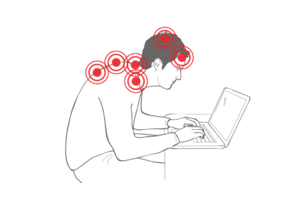In today’s digital age, it’s hard to avoid spending long hours staring at screens, whether it’s for work, social media, or entertainment. Unfortunately, this extended screen time can often lead to neck pain, commonly known as “tech neck” or “text neck”. Tech neck refers to the discomfort or pain caused by poor posture when using digital devices, such as smartphones, tablets, and computers. The good news is that with a few simple physiotherapy tips, you can reduce the risk of developing tech neck and promote better posture.
The physiotherapists at Triangle Physiotherapy can help you with the neck pain that is associated with extended use of digital devices.
What Causes Neck Pain from Digital Devices?
The main culprit behind neck pain associated with digital devices is poor posture. When we use our devices, we often find ourselves slouching or looking down for extended periods, which places unnecessary strain on the neck muscles and spine. Over time, this repetitive motion can lead to muscle tension, discomfort, and even long-term damage.

Several factors contribute to this issue, including:
- Forward head posture: When you lean your head forward to look at your device, the muscles in the neck and upper back work harder to hold your head in position, leading to strain.
- Slouching: Sitting or standing with a rounded back and shoulders can cause the neck to overcompensate, increasing pressure on the muscles and joints.
- Screen height and distance: If your screen is too low or too far from your eyes, it forces you to look down or strain your neck to see clearly.
Common Symptoms of Tech Neck from Screen Use
Neck pain related to digital devices can present itself in various ways, including:
- Stiffness and soreness: You may notice tightness in your neck, shoulders, or upper back after using your devices for extended periods.
- Headaches: Tension in the neck muscles can trigger headaches, particularly around the base of the skull.
- Pain with movement: You might feel discomfort or limited mobility when trying to turn your head or tilt your neck.
- Numbness or tingling: In some cases, pressure on the nerves in the neck can cause sensations of numbness or tingling in the arms or hands.
How to Prevent Neck Pain from Digital Devices
The good news is that neck pain from digital devices can be prevented with some mindful changes to your posture and daily habits. Here are a few physiotherapy tips to help you avoid tech neck:
- Maintain Proper Posture: Always aim to keep your head aligned with your spine. Your ears should be over your shoulders, and your shoulders should be back, not hunched forward. Keep your screen at eye level to avoid tilting your head downward.
- Take Regular Breaks: Avoid sitting in the same position for too long. Follow the 20-20-20 rule: every 20 minutes, take a 20-second break and look at something 20 feet away to give your eyes and neck a break.
- Use Ergonomic Setups: Set up your workstation so that your screen is at eye level, and your chair provides proper lumbar support. If you’re using a phone or tablet, consider holding it at eye level or using a stand to prevent looking down.
- Stretch and Strengthen: Incorporate neck and shoulder stretches into your daily routine to relieve tension and promote flexibility. Strengthening exercises for the upper back can also improve posture and support the neck muscles.
- Adjust Screen Time: Reducing the amount of time spent on screens can help lower your risk of neck pain. If you’re working long hours on a computer, try to schedule breaks to move and stretch regularly.
- Stay Hydrated: Dehydration can make muscles more prone to stiffness. Drinking plenty of water can help keep your muscles healthy and prevent tightness.
Treatment for Neck Pain from Digital Devices
If you’re already experiencing neck pain, there are several treatment options available to help alleviate discomfort:
- Physiotherapy: A physiotherapist can assess your posture, identify any muscle imbalances, and recommend specific exercises to strengthen and stretch the muscles that support your neck.
- Massage Therapy: A massage therapist can help release tightness in the neck and upper back muscles, providing relief from tension.
- Hot or Cold Therapy: Applying a warm compress or ice pack to the neck can help reduce inflammation and ease muscle stiffness.
Preventing Text Neck Long-Term
To prevent recurring neck pain, it’s essential to incorporate good posture habits into your daily routine and practice regular stretches and strengthening exercises. Additionally:
- Avoid prolonged screen use: Try to limit the amount of time you spend hunched over devices, especially for tasks that require sustained focus.
- Optimize your workspace: Ensure your desk, chair, and screen setup are ergonomically sound to support good posture.
- Move frequently: Avoid sitting for extended periods without changing positions or stretching.
Neck pain from digital devices is a growing concern, but with the right prevention strategies, it’s entirely possible to avoid or minimize discomfort. By being mindful of your posture, taking regular breaks, and incorporating stretches and strengthening exercises into your routine, you can protect your neck and enjoy your screen time without the pain. If you’re already experiencing neck pain, consider consulting with a physiotherapist to develop a treatment plan that will get you back to feeling your best.


